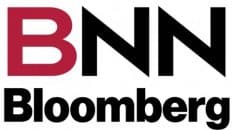I’ve got some good news and some bad news.
The bad news is a new virus has emerged.
The good news? It only affects analysts, like the writer of this report, who are burdened with, “making the call” on the prices of short, long, or any term forecasts of any or all fossil fuels!
One of the symptoms of this new, AV (Analytical Virus), is a twitch that develops and then intensifies from slow news day Mondays to… “What the (expletive deleted) is going on?” Fridays.
It seems that I, along with most consumers, have been following the wrong path by lending too much credence to the laws of supply and demand because we too often forget to include the laws of political interference of which, there are no laws.
If we stubbornly look at the current supply versus demand arithmetic, then where should prices be today, and where might they be a week, a month, or six months from now? U.S. crude inventories are OK-ish for now, so from that perspective prices should remain stable. But that assumes we have removed the political factor, so we must put that back in.
Have we reached the bottom of the crude oil price curve?
Possibly.
That’s because the closer we get to the results of the U.S. midterms, the further we get from U.S. President Joe Biden manipulating U.S. crude inventories to lower domestic pump prices. This will mean higher crude costs.
The current low, West Texas Intermediate (WTI) price is beginning to annoy the Saudis who really control OPEC. They will be pushing for a one million barrel per day production cutback at their next plotting meeting on October 5th.
The next key date is December 5th, when the EU’s sanctions on imports of Russian crude and refined products kicks in. Then the G7 will take a page from the Saudis, along with the rest of OPEC, and set a price cap for those silly enough to want Russian oil.
The plan is to place the clamp on provisions that enable marine transportation of Russian crude, a kind of supertanker insurance. These factors alone should increase crude oil and refined product prices by the end of 2022 and continue into Q1 and Q2 of 2023.
And it could get even uglier because President Putin will no doubt cut off natural gas supply to Europe just as winter bangs at the door.
But will all this be countered when we look at demand?
High interest rates and spiraling inflation may make a valiant effort to quell higher crude costs by slowing demand for refined products. In addition, a strong U.S. dollar moves investments to financial markets rather than crude oil markets, which should lower crude prices. We must not forget however, that all crude oil and refined products are bought and sold in U.S. dollars. If the Canadian dollar and other currencies fall against the U.S. dollar, then prices at the pump and loading rack will increase, even if the price of WTI heads in the opposite direction.
It’s a push-pull political crude oil pricing game. A game the consumer cannot win
– Roger McKnight – B.Sc., Senior Petroleum Analyst








Add comment